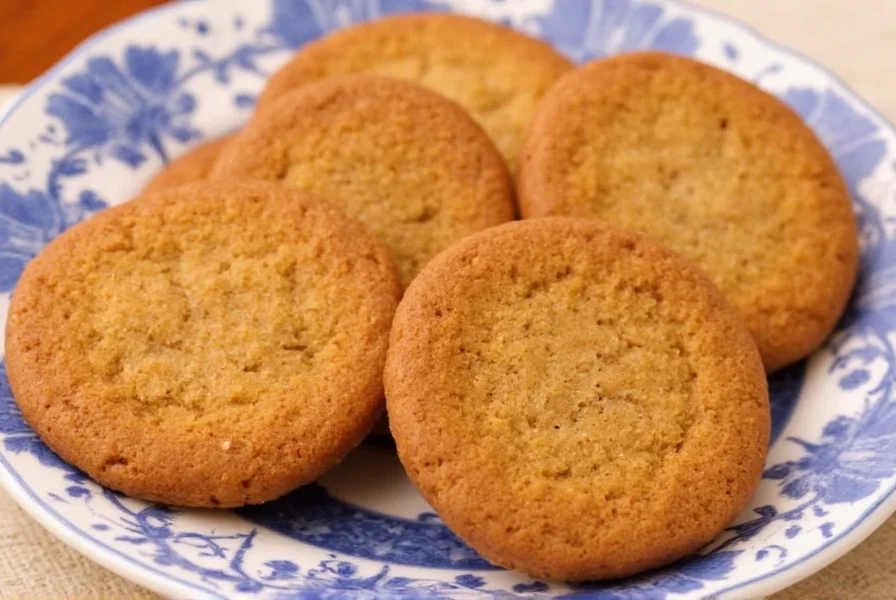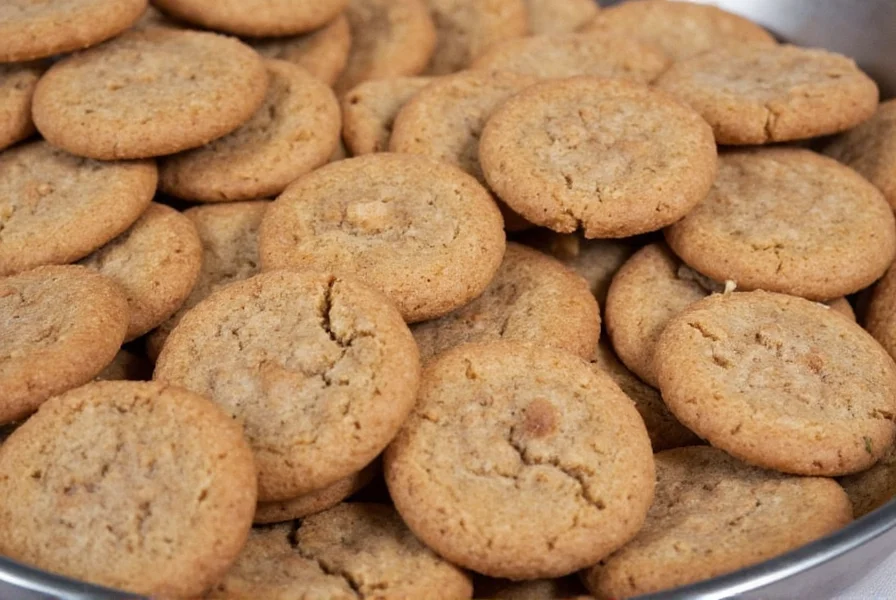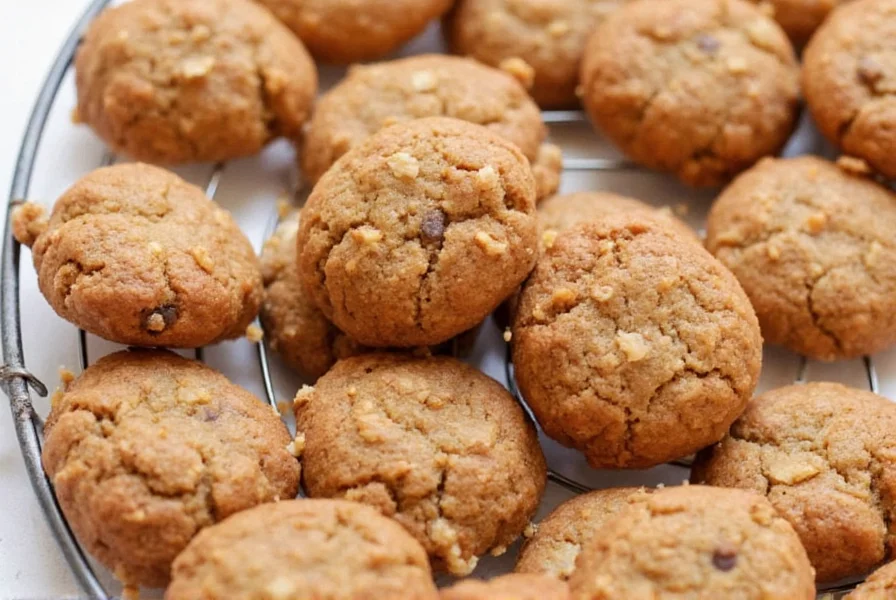These historic cookies trace their roots to spiced honey cakes baked by European monks as early as the 8th century. When molasses became more accessible in the 19th century, it replaced honey as the primary sweetener, creating the ginger snaps we recognize today. The name "snaps" comes from the audible cracking sound they make as they cool and harden.
The Distinctive Qualities of Traditional Ginger Snaps
What separates authentic old fashioned ginger snaps from contemporary ginger cookies? Three key characteristics define the traditional version:
- Texture: Properly made ginger snaps should be crisp throughout with no soft center, maintaining their shape without spreading excessively
- Flavor profile: A balanced blend of sharp ginger, warm cinnamon, and robust molasses without overwhelming sweetness
- Surface appearance: Characteristic fine cracks that form during baking as the high sugar content crystallizes
Modern "ginger cookies" often sacrifice crispness for chewiness by increasing butter and flour while reducing molasses and spices. True old fashioned ginger snaps maintain their structural integrity even when dunked in tea or coffee—a hallmark of their traditional preparation.
Traditional Ingredients and Their Purpose
The magic of authentic old fashioned ginger snaps lies in the precise combination of simple ingredients, each serving a specific purpose in creating the distinctive texture and flavor:
| Ingredient | Traditional Amount | Functional Purpose |
|---|---|---|
| Dark molasses | ¾ cup | Provides deep flavor, acidity for rise, and contributes to cracking surface |
| Granulated sugar | 1 cup | Creates crisp texture and facilitates surface cracking during baking |
| Butter (unsalted) | ½ cup | Limited amount preserves crispness while adding flavor complexity |
| Ground ginger | 2½ tsp | Primary spice with sharp, warm flavor characteristic of traditional snaps |
| Cinnamon | 1 tsp | Supporting spice that enhances ginger without overpowering |
Unlike modern recipes that often include baking powder for lift, traditional old fashioned ginger snaps rely solely on the reaction between molasses and baking soda for minimal rise, preserving their signature thin, crisp profile.

Authentic Old Fashioned Ginger Snaps Recipe
Following this traditional method produces cookies that maintain their historical characteristics while delivering exceptional flavor:
Ingredients
- ¾ cup dark molasses (not blackstrap)
- 1 cup granulated sugar
- ½ cup unsalted butter, softened
- 2¼ cups all-purpose flour
- 2½ teaspoons ground ginger
- 1 teaspoon ground cinnamon
- ½ teaspoon baking soda
- ¼ teaspoon salt
- 2 tablespoons boiling water
Method
- In a medium saucepan, combine molasses and sugar. Heat over medium until mixture reaches 230°F (110°C), stirring constantly
- Remove from heat and add butter, stirring until melted
- In a separate bowl, whisk together flour, ginger, cinnamon, baking soda, and salt
- Dissolve baking soda in boiling water, then add to molasses mixture
- Gradually incorporate dry ingredients into wet mixture until fully combined
- Cover and refrigerate dough for at least 24 hours (critical for flavor development)
- Preheat oven to 350°F (175°C) and line baking sheets with parchment
- Roll dough into 1-inch balls and place 2 inches apart on baking sheets
- Bake for 10-12 minutes until edges are set and surface has fine cracks
- Cool completely on baking sheet to allow cookies to fully crisp
Common Baking Challenges and Solutions
When making traditional old fashioned ginger snaps, several issues may arise. Understanding these problems helps maintain authenticity while ensuring success:
- Excessive spreading: Indicates insufficient chilling time. Dough must be thoroughly chilled (minimum 24 hours) to prevent spreading. The traditional high sugar content requires proper temperature control.
- No surface cracking: Results from incorrect sugar-to-molasses ratio or inadequate baking temperature. Authentic ginger snaps must develop fine cracks as they bake.
- Too hard/brittle: Often caused by overbaking or using too much baking soda. Traditional ginger snaps should be crisp but not shatter when bitten.
- Lack of ginger "bite": Modern ground ginger loses potency quickly. For authentic old fashioned ginger snaps, use freshly ground dried ginger root or ensure your spice is recently purchased.

Why Traditional Methods Matter
The extended chilling period in authentic old fashioned ginger snaps recipes serves multiple critical functions beyond just firming the dough. During the 24-hour rest, the molasses undergoes subtle chemical changes that deepen the flavor profile and improve the characteristic cracking. The extended hydration time allows the flour to fully absorb the liquid ingredients, resulting in more consistent texture throughout baking.
Modern shortcuts like reducing chilling time or substituting ingredients fundamentally alter the cookie's structure. True old fashioned ginger snaps maintain their integrity when dunked—a quality lost in softer modern interpretations. This dunking resilience made them historically popular with sailors and travelers who needed durable provisions.
Serving and Storage Traditions
Traditional ginger snaps were often served with strong black tea or coffee, which complemented their spicy profile. In colonial America, they were commonly paired with hard cider. For authentic presentation, serve old fashioned ginger snaps slightly warm to enhance their aromatic qualities.
Properly stored in an airtight container, traditional ginger snaps actually improve over 3-5 days as the flavors continue to meld. Unlike soft cookies that stale quickly, the high sugar content in authentic old fashioned ginger snaps preserves their crisp texture for up to two weeks. For longer storage, freeze the baked cookies between layers of parchment paper.
What's the difference between ginger snaps and ginger cookies?
Traditional ginger snaps are crisp throughout with a characteristic cracked surface and maintain their shape when dunked. Ginger cookies are typically softer, chewier, and often spread more during baking. Authentic old fashioned ginger snaps use higher molasses-to-flour ratios and less fat than modern ginger cookies, creating their distinctive hard texture.
Why must ginger snap dough be chilled for 24 hours?
The 24-hour chilling period is essential for authentic old fashioned ginger snaps because it allows the molasses to undergo subtle chemical changes that deepen the flavor. It also gives the flour time to fully hydrate, prevents excessive spreading during baking, and contributes to the characteristic surface cracking. Skipping this step results in cookies that lack traditional flavor complexity and proper texture.
Can I use blackstrap molasses in old fashioned ginger snaps?
Blackstrap molasses is too bitter and strong for authentic old fashioned ginger snaps. Traditional recipes call for dark molasses (sometimes labeled "robust" or "full-flavor" molasses), which has a balanced sweetness and rich flavor without the harsh bitterness of blackstrap. Using blackstrap will overpower the delicate spice balance that defines proper ginger snaps.
Why don't my ginger snaps develop cracks on the surface?
Surface cracking is a hallmark of properly made old fashioned ginger snaps and requires several conditions: the correct sugar-to-molasses ratio, adequate baking temperature (350°F/175°C), and properly chilled dough. If your cookies aren't cracking, you may be using too much flour, insufficient sugar, or baking at too low a temperature. The high sugar content must crystallize properly during baking to create the characteristic fine cracks.
How can I tell if my ginger snaps are authentically old fashioned?
Authentic old fashioned ginger snaps should be uniformly crisp throughout (not soft in the center), maintain their shape without excessive spreading, display fine surface cracks, and have a complex flavor where the ginger "bites" back rather than being overly sweet. They should also hold their integrity when dunked in liquid, a key characteristic that distinguished traditional ginger snaps from softer modern variations.











 浙公网安备
33010002000092号
浙公网安备
33010002000092号 浙B2-20120091-4
浙B2-20120091-4